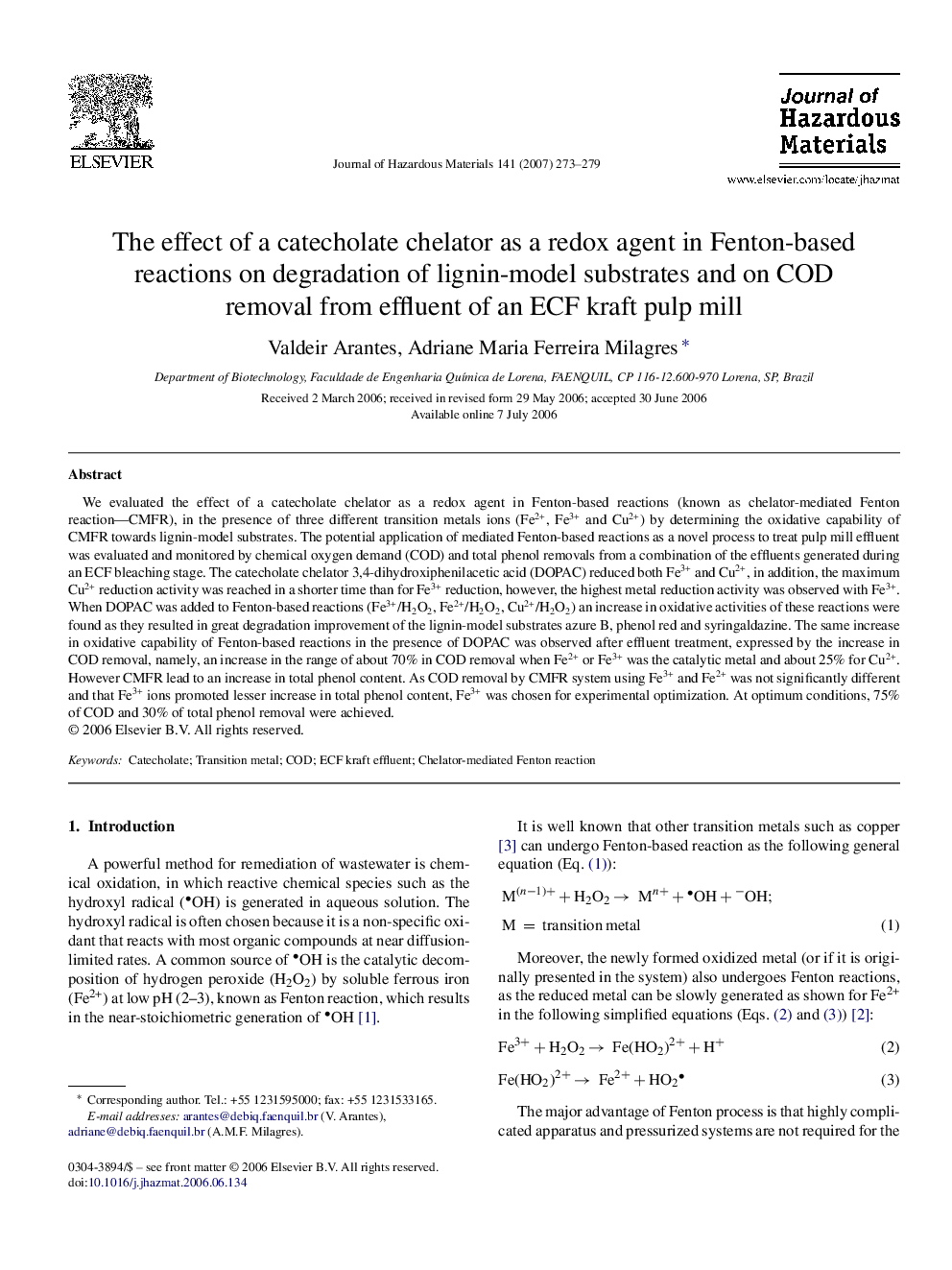| کد مقاله | کد نشریه | سال انتشار | مقاله انگلیسی | نسخه تمام متن |
|---|---|---|---|---|
| 584822 | 877898 | 2007 | 7 صفحه PDF | دانلود رایگان |
عنوان انگلیسی مقاله ISI
The effect of a catecholate chelator as a redox agent in Fenton-based reactions on degradation of lignin-model substrates and on COD removal from effluent of an ECF kraft pulp mill
دانلود مقاله + سفارش ترجمه
دانلود مقاله ISI انگلیسی
رایگان برای ایرانیان
موضوعات مرتبط
مهندسی و علوم پایه
مهندسی شیمی
بهداشت و امنیت شیمی
پیش نمایش صفحه اول مقاله

چکیده انگلیسی
We evaluated the effect of a catecholate chelator as a redox agent in Fenton-based reactions (known as chelator-mediated Fenton reaction-CMFR), in the presence of three different transition metals ions (Fe2+, Fe3+ and Cu2+) by determining the oxidative capability of CMFR towards lignin-model substrates. The potential application of mediated Fenton-based reactions as a novel process to treat pulp mill effluent was evaluated and monitored by chemical oxygen demand (COD) and total phenol removals from a combination of the effluents generated during an ECF bleaching stage. The catecholate chelator 3,4-dihydroxiphenilacetic acid (DOPAC) reduced both Fe3+ and Cu2+, in addition, the maximum Cu2+ reduction activity was reached in a shorter time than for Fe3+ reduction, however, the highest metal reduction activity was observed with Fe3+. When DOPAC was added to Fenton-based reactions (Fe3+/H2O2, Fe2+/H2O2, Cu2+/H2O2) an increase in oxidative activities of these reactions were found as they resulted in great degradation improvement of the lignin-model substrates azure B, phenol red and syringaldazine. The same increase in oxidative capability of Fenton-based reactions in the presence of DOPAC was observed after effluent treatment, expressed by the increase in COD removal, namely, an increase in the range of about 70% in COD removal when Fe2+ or Fe3+ was the catalytic metal and about 25% for Cu2+. However CMFR lead to an increase in total phenol content. As COD removal by CMFR system using Fe3+ and Fe2+ was not significantly different and that Fe3+ ions promoted lesser increase in total phenol content, Fe3+ was chosen for experimental optimization. At optimum conditions, 75% of COD and 30% of total phenol removal were achieved.
ناشر
Database: Elsevier - ScienceDirect (ساینس دایرکت)
Journal: Journal of Hazardous Materials - Volume 141, Issue 1, 6 March 2007, Pages 273-279
Journal: Journal of Hazardous Materials - Volume 141, Issue 1, 6 March 2007, Pages 273-279
نویسندگان
Valdeir Arantes, Adriane Maria Ferreira Milagres,